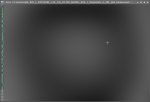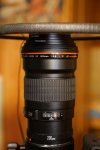Hi there,
I'm having trouble creating a master flat frame in Pixinsight based on CR3 raw files from my new EOS R6. The flats were shot with a flat field light and an exposure time of 0.5sec (ISO200, @~f4). I'd checked the histogram on the camera screen. It looked OK.
In Pixinsight, a single flat frame is only displayed very darkly. The Image Statistics in 16Bit gives a minimum/average/maximum of 2218/4478/6894.

The master flat looks even worse: 226/1105/ 1720.
For comparison, I looked at a single image in APT. The histogram looks reasonable here. I double checked that there was not autoscaling applied. The same applies to Affinity Photo. Curiously, the histograms are a bit different. However, they show normal values and are not remotely as dark as in Pixinsight. The next to images show screenshots of APT (light blue background is a crop of the rendered single flat frame) and Affinity Photo:


I have no idea what went wrong here. Whether a setting is wrong or whether there is an error in Pixinsight. But, almost always the problem is in front of the screen.
I've isolated the creation of the flats from the rest of the processing. The WBPP screenshot shows the associated configuration:

I would be very grateful for any hint!
I have stored a single Raw File and the MasterFlat on the following drive: https://c.1und1.de/@714447422012528392/eXOXkcEOS9ii01foLkXCcg
If I want to to calibrate the lights with this flat I get the following error: !!! Error: No active light frames in the group.
Best regards
Hajo
PS: I looked at all the individual flats with Blink. They all look the same! Incidentally, I have never had any problems with my OSC ASI071MCpro.
I'm having trouble creating a master flat frame in Pixinsight based on CR3 raw files from my new EOS R6. The flats were shot with a flat field light and an exposure time of 0.5sec (ISO200, @~f4). I'd checked the histogram on the camera screen. It looked OK.
In Pixinsight, a single flat frame is only displayed very darkly. The Image Statistics in 16Bit gives a minimum/average/maximum of 2218/4478/6894.
The master flat looks even worse: 226/1105/ 1720.
For comparison, I looked at a single image in APT. The histogram looks reasonable here. I double checked that there was not autoscaling applied. The same applies to Affinity Photo. Curiously, the histograms are a bit different. However, they show normal values and are not remotely as dark as in Pixinsight. The next to images show screenshots of APT (light blue background is a crop of the rendered single flat frame) and Affinity Photo:
I have no idea what went wrong here. Whether a setting is wrong or whether there is an error in Pixinsight. But, almost always the problem is in front of the screen.
I've isolated the creation of the flats from the rest of the processing. The WBPP screenshot shows the associated configuration:
I would be very grateful for any hint!
I have stored a single Raw File and the MasterFlat on the following drive: https://c.1und1.de/@714447422012528392/eXOXkcEOS9ii01foLkXCcg
If I want to to calibrate the lights with this flat I get the following error: !!! Error: No active light frames in the group.
Best regards
Hajo
PS: I looked at all the individual flats with Blink. They all look the same! Incidentally, I have never had any problems with my OSC ASI071MCpro.
Last edited:


